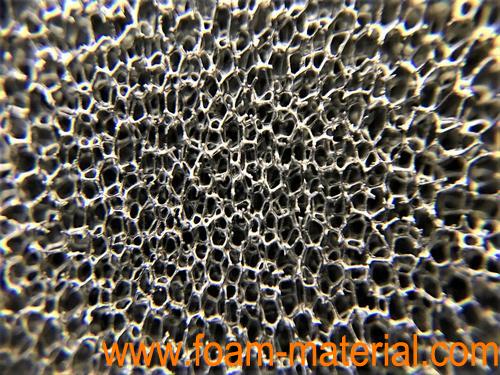Characteristics and Applications of Carbon (C) Metal Foam
1. Characteristics of C Metal Foam:
Porous Structure: Carbon metal foam is characterized by a three-dimensional network of interconnected pores, providing a high surface area and low density.
Lightweight: C metal foam is exceptionally lightweight, making it suitable for applications where weight reduction is critical.
Thermal Conductivity: Depending on the specific structure, carbon foam can exhibit good thermal conductivity, making it useful for thermal management applications.
Electrically Conductive: Some variants of Graphene Foam possess electrical conductivity, enabling applications in electronics and sensors.
Highly Absorbent: The porous nature of carbon foam allows for high absorption capacity, finding use in filtration and absorption applications.
Structural Stability: Copper foam can offer structural stability and strength, depending on the production method and additives used.
2. Production Methods:
Replication Method: Involves the replication of a polymeric foam template by infiltrating it with a carbon precursor and subsequent carbonization.
Chemical Vapor Deposition (CVD): A method where carbonaceous materials are deposited onto a substrate in the presence of certain gases.
Powder Metallurgy: Involves mixing carbon powder with a metal powder and a blowing agent, by sintering to create the foam structure.
3. Applications of C Metal Foam:
Thermal Insulation: Due to its low thermal conductivity,Nickel foam is used for thermal insulation in various applications, including in the aerospace industry.
Energy Absorption: The ability to absorb energy makes carbon foam suitable for applications in impact-resistant materials, such as vehicle bumpers and armor.
Catalyst Support: The high surface area and structural stability make carbon foam an excellent support for catalytic materials, finding use in chemical processes.
Filtration: The porous structure allows for effective filtration of gases and liquids, making it valuable for air and water purification systems.
Electrodes for Batteries and Supercapacitors: Carbon foam's electrical conductivity makes it suitable for electrodes in energy storage devices.
Biomedical Implants: Biocompatible variants of carbon foam are explored for use in biomedical implants and scaffolds for tissue engineering.
Aerospace Components: The lightweight yet structurally stable nature of carbon metal foam makes it suitable for certain aerospace components where weight reduction is critical.
4. Challenges and Future Developments:
Cost: The cost of production remains a challenge for widespread adoption, especially in large-scale applications.
Scalability: Achieving scalability in manufacturing processes is crucial for expanding the use of carbon metal foam.
Optimizing Properties: Continued research is focused on optimizing the properties of carbon foam through variations in production methods and material compositions.
In conclusion, carbon metal foam's unique combination of characteristics makes it a versatile material with applications across multiple industries, and ongoing research aims to address challenges and unlock new possibilities for its use.
12 No. 62 Yuanshan North Road, Huli District, Xiamen City, Fujian Province, China
tel :
+86-592-7296029email :
Daisy@foam-material.comCopyright © Cheap Copper Foam, Iron Nickel Foam, Titanium Foam All Rights Reserved. Powered by dyyseo.com
 Daisy@foam-material.com
Daisy@foam-material.com
